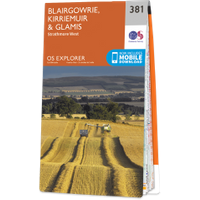Airlie Castle
Airlie Castle was built around 1432 by Walter Ogilvy of Lintrathen, occupying a defensive position at the confluence of the River Isla and the Melgam Water. Protected by the two rivers, a moat defended the eastern approach, and it took the form of a rectangular courtyard with 3 metre thick walls.
James Ogilvy was created the 1st Earl of Airlie by Charles I at York in 1639, but his refusal to sign the National Covenant meant his family’s castles at Airlie, Craig and Forter were burned by Archibald Campbell, the 8th Earl of Argyll, in 1640.
The castle wasn’t rebuilt, and following the Ogilvys’ support of the Jacobite Risings, it was confiscated by George II while David Ogilvy escaped to France via Norway and Sweden. He served in Louis XV’s army and commanded “le regiment Ogilvy”, earning the nickname “le bel Ecossais”.
In 1778 David Ogilvy was pardoned and returned to Scotland from exile in Versailles, bringing with him French masons who built him a new mansion between 1792 and 1793.
The new house was built on the north wall of the former castle’s courtyard, incorporating older details, and the east wall of the original courtyard is still standing, measuring around 36 metres long by 3 metres thick and 9 metres tall. At the north end of this wall is an entrance gateway – formerly housing a portcullis – above which is a square tower, built later than the original courtyard.
Airlie Castle was fully restored in the 20th century.
Alternative names for Airlie Castle
Airlie House; Arlie; Errolly Castle









